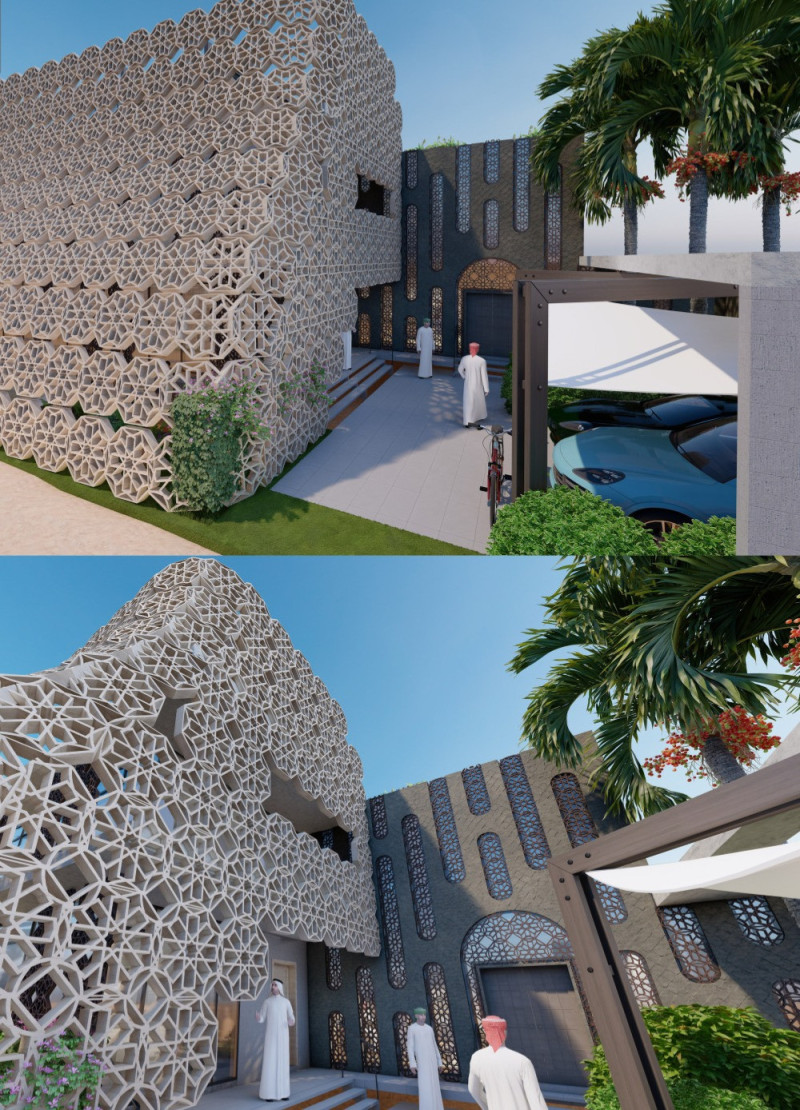5 key facts about this project
At its core, this project represents a thoughtful exploration of how architecture can respond to environmental concerns without compromising aesthetic appeal. The designers have crafted a space that prioritizes the connection between indoor and outdoor environments, allowing occupants to experience a seamless transition between living spaces and nature. This philosophy is integral to the building's function, which facilitates both private and communal living experiences. The layout encourages social interaction, with open-concept areas that invite gatherings while maintaining areas of personal retreat, reflecting a contemporary understanding of living in harmony with both people and nature.
The design strategically employs diverse materials, reflecting a dedication to environmental responsibility. Reinforced concrete forms the structural backbone of the project, ensuring durability against the elements. Cedar wood is generously used in the cladding, contributing warmth and a sense of place that resonates with the local context. Expansive glass surfaces play a crucial role in the design, facilitating natural light throughout the spaces while framing panoramic views of the surrounding landscape. Recycled steel elements further enhance the project’s sustainability credentials, demonstrating a commitment to using responsibly sourced materials.
Noteworthy details of the architecture include cantilevered balconies that extend from the main structure, providing shaded outdoor areas that enhance the usability of these spaces. These features not only add aesthetic interest but also serve a practical purpose by improving comfort levels in warm weather. The integration of green roofs and landscaped pathways emphasizes the project’s ecological sensitivity, promoting biodiversity and allowing native plant species to flourish within the urban setting. This approach not only reduces the visual impact of the built environment but also supports local ecosystems.
The overall design approach reflects a clear intention to create a place that is both functional and reflective of its context. By prioritizing open living areas and incorporating flexible spaces within the design, the project adapts to the varying needs of its users, from family gatherings to quiet contemplation. The architectural plans reveal a meticulous attention to detail, with carefully considered circulation paths that guide inhabitants through the space while inviting them to experience the surrounding environment in new ways.
Additionally, the commitment to renewable energy solutions is evident in the integration of solar panels into the design, mitigating the building's energy consumption and advocating for sustainable living practices. This focus not only aligns with the growing emphasis on ecological designs in contemporary architecture but also serves as an educational component for residents and visitors alike, showcasing the possibilities of sustainable technologies.
As a holistic architectural project, it embodies a clear vision of modern living that respects and enhances the natural landscape. The combination of thoughtful design elements, high-quality materials, and a focus on sustainability makes it a significant addition to the field of architecture. For those interested in exploring the intricate details of this project—ranging from architectural plans to sections and a deeper understanding of the design philosophy—consider reviewing the comprehensive presentation available. Such exploration will provide valuable insights into the architectural ideas and solutions that define this impressive project.


























